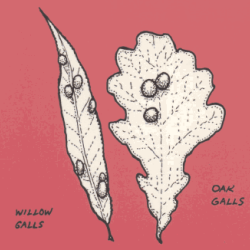Source Institutions
Source Institutions
Add to list Go to activity
Activity link broken? See if it's at the internet archive

In this outdoor activity, learners find the swollen bumps known as "galls" on various plants and get a closeup look at the parasitic animals living inside. Galls form on various plants including rosebushes, oaks, elms and willows after a female insect places one or more eggs into the living tissue of a branch or leaf. Learners explore what the galls provide, such as food or protection, as eggs become larvae, and what effects larvae have on their specific host plants.
- 45 to 60 minutes
- $5 - $10 per group of students
- Ages 8 - 18
- Activity
- English
Quick Guide
Materials List (per group of students)
- strips of bright cloth or plastic flagging
- bug boxes or hand lenses
- plastic bags
- 1 or 2 sharp knives
- 3 or 4 pairs of tweezers
- data board or large drawing pad
- felt pen
Subjects
-
Life Sciences
-
Diversity of Life
- Plants
- Animals
-
Ecology
- Ecosystems
-
Diversity of Life
Informal Categories
- Animals
- Nature and Environment
- Outdoor Activity
Audience
To use this activity, learners need to:
- see
- be mobile
- touch
Learning styles supported:
- Involves teamwork and communication skills
- Involves hands-on or lab activities
Other
This resource is part of:
Access Rights:
- Free access
By:
Rights:
- All rights reserved, The Regents of the University of California, 1982
